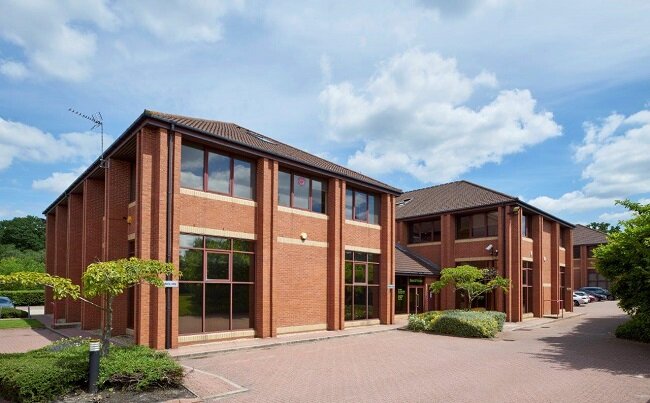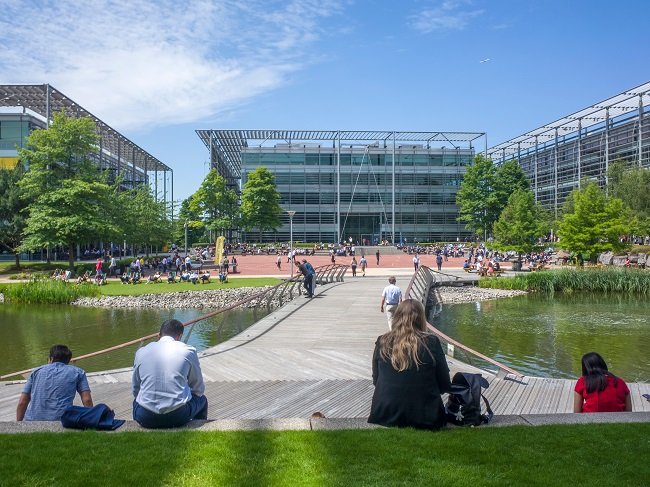The original ‘Back to the Future’ film was released in 1985 and starred Michael J Fox as a teenager in a time-travelling DeLorean automobile built by his eccentric scientist friend Doctor Emmett "Doc" Brown (Christopher Lloyd).
*Photograph courtesy of Shutterstock
Business Parks first appeared in North America in the early 1950’s. Here in the UK, it was not until planning laws changed in 1987 that Business Parks really took off. By the late nineties though, they went into decline. But things are changing and the pandemic may be the reason why.
The UK’s first Business Parks opened their doors in the South East of England in 1988. They were located in Fleet in Hampshire (Ancells Business Park), Guildford in Surrey (Guildford Business Park) and Reading in Berkshire (Winnersh Triangle).
To put things into context, 1988 was the year that Comic Relief held its first Red Nose Day. Margaret Thatcher became the longest serving British Prime Minister of the twentieth century. Also worth noting, UK Base Lending Rate was 12.875% (today it is 0.10%) and the median house price was £90,000 (it was £265,000 in June 2021).
So why did it take so long for us to develop business parks compared to the Americans? The answer is simple. It was against the law. You see until ‘The Town & Country Planning (Use Classes) Order 1987’ came into force in June 1987 and introduced a new use class called B1, business park development was not permitted in the UK. Up until then, the concept of having groups of hi-tech production units and offices located together in a parkland setting wasn’t something the UK government was in favour of. Instead, its priority had been to concentrate office development in urban centres in order to encourage much needed re-generation after years of neglect and under-investment in the post-war era.
Ancells Business Park in Fleet, Hampshire opened in 1988. Developed on a 20-acre edge of town site alongside the M3 motorway and just an hour’s drive from London, the park would eventually benefit from a new motorway junction (4a) making it an ideal location for businesses seeking access to the regional motorway network.
The change in the use classes order opened the floodgates to new forms of development. Large, master planned environments with attractive lakes and on-site amenities started to emerge. Businesses began to relocate out of the town. The abundant free car parking helped fuel demand as many office workers were tired of the expense and daily grind of the commute. Soon retail parks and new housing estates started to develop to support these new business hubs.
The success of business parks of course, came at a price. Demand for offices in suburban town centres and for lower quality buildings in city centres declined as footloose and often price sensitive occupiers moved to the cheaper, more accessible out-of-town parks.
Over time however, environmental pressures mounted and the emphasis shifted once more towards town and city centres. As a result, business parks started to fall out of favour in the late nineties and early noughties. In recent years, demand has been so weak that some of the original business parks developed in the late 1980’s have been considered for conversion to residential use.
But the pendulum may be about to swing the other way. In the last 6 months, I have witnessed a resurgence in demand for business park offices. The main driver appears to be the desire to attract staff back to the office by making it as easy and stress free as possible for them to do so. One way of achieving this is to provide free parking outside the front door of the office. This allows staff to avoid public transport and the perceived risk that this presents in terms of virus transmission. There is also the fact that new more agile workstyles enable staff to avoid the traditional rush hour congestion helping them to strike a better home life/work life balance.
Of course, offices on business parks also tend to be cheaper to rent than those in city centres so there is usually a cost saving for the employer to factor in as well.
It is also easier to purchase a property on a business park than in a town or city centre so that can be an added draw for some business owners.
Whilst there might well be a business park renaissance underway, it seems unlikely that we will see a major political shift to encouraging out-of-town office development. The sustainability objections are now just too strong, I think. However, I think there is a chance that satellite offices located in suburbs with strong public transport connectivity could prove attractive to those businesses looking for a half-way house. That may explain why town centres such as Altrincham in Greater Manchester are currently experiencing such strong demand.
If you would like advice on your office relocation, please call Martyn Markland on 0161 457 1422 or email him at mm@tenantag.co.uk



